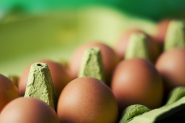Hopefully your garden was productive this year, and if so, you probably have a big surplus of veggies. With so many vegetables around at one time, it’s unlikely that you’ll be eating them all before they go bad.
But there are ways to make those perishable foods last well into the winter. All it takes is some creativity and a few supplies.
Storing
The easiest, most basic way to keep foods is just to store them as is. For a lot of crops, this may be the best way to do it. Onions, potatoes, carrots, and other root crops can be placed in bins and stored either in a cool, dark place in your home, or in a root cellar.
It is important to keep the vegetables in their own bins because mixing them together can cause problems. Onions will draw moisture out of anything that isn’t another onion, and potatoes can cause carrots to go moldy.
If you have a large cabinet against an outside wall and a couple of baskets, this can be a good place to store the veggies. You don’t want them to freeze, but they also can’t be warm. A refrigerator is the ideal place to store them, but hopefully you have so many potatoes and onions that there isn’t any room if the fridge. That’s the kind of problem you want to have!
Drying
Herbs, chives, green onions, and other crops that don’t store too well can be cut up and dried, and used almost indefinitely. Save up some old spice containers or baby food jars, and your dried herbs should get you through the winter.
When herbs and onions are dried, the flavor gets concentrated. You need far less of a dried herb to flavor your food than of the fresh herb, so a little pinch will go a long way. When drying these crops, make sure there is plenty of air flow around them as they dry, or put them in the oven at a low temperature.
Freezing
Broccoli, carrots, corn, beans, and peas are commonly frozen vegetables. Think about the freezer section of the grocery store, and that will give you an idea of what vegetables can be frozen. There’s a wide variety, and most frozen vegetables, if handled right, will last up to a year in the freezer.
Before freezing any vegetable, be sure to blanch them first. Bring water to a boil and cook the vegetables for about a minute. Then immediately immerse the veggies in cold water to stop the cooking process. You can freeze them whole of cut them into smaller pieces. Broccoli, cauliflower, and other branching vegetables should be cut into smaller pieces.
Pickling
Believe it or not, you can pickle more than just cucumbers! Pickled green beans are one of my favorite treats in the middle of winter. Vinegary, crunchy, snappy, and with big hunks of garlic, onion, and dill make a wonderful combination that is very different from traditional pickles.
Generally speaking, the hardier the vegetable, the better it is for pickling. Beans, cucumbers, and peppers are pretty common for pickling. But carrots, beets, garlic, and a host of other veggies can be preserved through pickling.
Pickling is a great way to preserve a variety of foods, and not need to refrigerate them at all. There’s also something special about seeing all of your jars of food on the shelf and knowing that you’ll be all set in case of an emergency.
Mason Jar Meals
Taking a cue from pickling, invest in an extra set of glass jars so that you can make entire meals in a jar. Breakfast jars can especially good, but it’s easy to put an entire well balanced meal in a jar. From pasta to salad to seven-layer dip, meals in jar can not only help make your vegetables last longer, while saving you money and creating an easy way to eat healthy.
For a basic breakfast jar, scramble a couple of your fresh eggs and fall-harvested potatoes. Put the potatoes in the jar first, then top with the eggs and some cheese and bacon or sausage if you want. Pop it in the freezer and you have breakfast-to-go any time you want it.
Don’t Waste Your Hard Work
When you have a good garden year, and there’s an abundance of crops to handle in the fall, it can be tempting to give a lot of them away or make just one type of dish to freeze. You’ll get bored and be unhappy with your storage options.
By using a assortment of techniques to make your food last longer into the cold months, you can have a huge variety of options for enjoying your fall crops well into the winter.
Want to learn how to preserve meat and eggs? Check out my article on how to make your meat, eggs, and last.
Curious about keeping chickens over winter? This article talks all about how to keep your chickens healthy in cold weather.
Want an all encompassing survival food list? Check out this one here.

